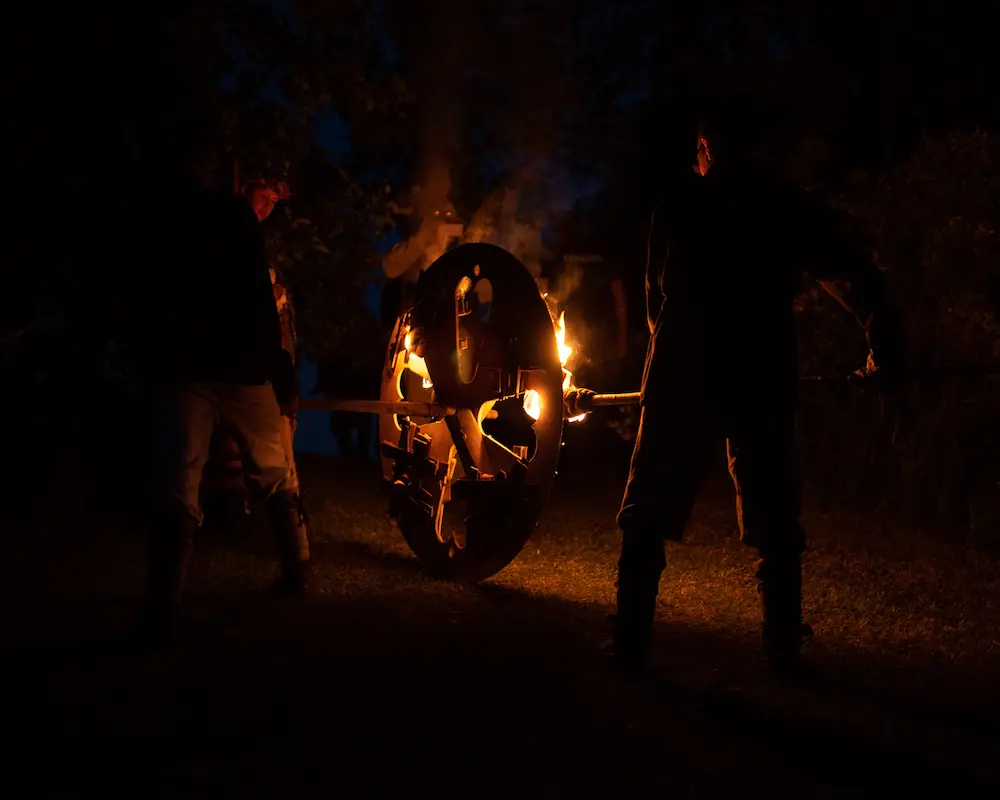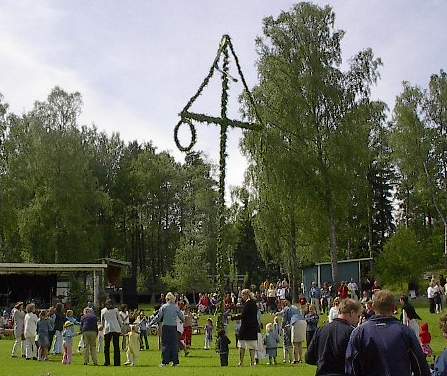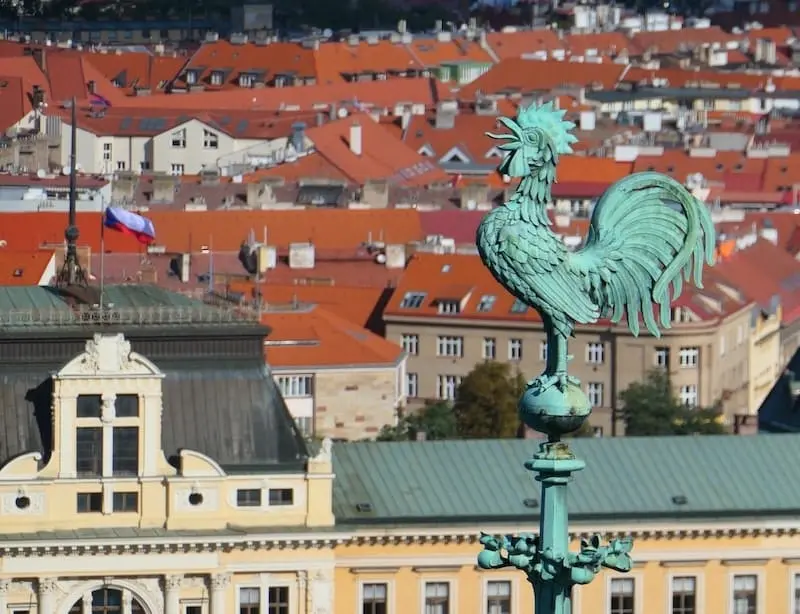TL;DR: in Europe, not all the Midsummer rites are like in the movie. Or that other one. Or the TV series strangely full of weird homicides. In general: Is there fire? Yup. Are animals involved? Often. Is there sacrifice? Sometimes. Wait… Darn.
It is common knowledge that the solstices are very special days: the time when the day or the night are the longest in the whole year. It always fascinated humankind… There has always been some kind of mystic feeling about it. Across the world, many different rites are performed in these days and nights, but some are very similar, especially in the European continent. Sadly, as always happens, many traditions are lost as time passes; but luckily others keep living in the present – mostly because of oral tradition.
Fire Walk With Me #
Frazier, in his Golden Bough, often tells about Fire Festivals in Europe, which mostly occured during Quarter Days. Of course, Celtic ones are the most famous worldwide – I bet everyone heard about Beltane at least once. Analyzing the past Summer solstice celebrations, we can find three main topics:
- The large bonfires we already saw
- Large wheels set on fire and let roll down a hill (we’ll talk about that in a minute)
- A procession through the fields with torches in hand
Among European and North African countries, the festivities were a lot, but they often had one of these three points in common. Some of them were kept alive until 1800s in rural areas.
The fire has a purifying role, but also embodies the power of life. Usually, with bonfires, animals were led through the flames to cure them and prevent illness; for the Summer solstice, though, a wooden wheel was also set on fire. It is said it could have several meanings: it symbolizes the sun, which from that moment (the solstice) starts its descent because of the shorter days. It may also be the cycle of the seasons. Here is a good an explanation (and its source, with several examples):
The idea was for it to roll all the way to the bottom, into the water if any; if it did not roll all the way down, the harvest would be bad.

Firing the wheel (via Wikimedia Commons)
Another custom was to throw wooden disks –on fire, of course– in the air, which symbolyzed the sun even more clearly. It was also common to look at the fire through bunches of larkspur to keep the eyes healthy the whole year. Also, as a good luck ritual, it was propitious to jump three or seven times on the fire.1 We don’t have much info about Scottish summer bonfires, but herdsmen used to walk three times around stables and folds holding torches to purify the animals. In Lower Brittany, people threw a pebble into the midsummer fire as a good omen.
In Norway, the fires were called Balder’s Bälar, to recall the Norse god’s funeral pyre. Finally, a curiosity about Islamic countries in Northern Africa: usually their festivities follow the lunar calendar, but the solstice bonfires are a tradition too. It could be a remanence of some pagan custom.
God Is in the House #
Irish farmers used to commemorate the Danaan goddess Áine by walking in procession on Kockainey Hill (Kock Aine) with torches. Some tales warn that people shouldn’t linger too much, though: she might appear to those getting late to demand the hill only for the danaan people, in order to celebrate.
In Sweden, interestingly, the Summer solstice is also a festivity about water: people used to walk to springs, which gained healing properties for the occasion. This festivity also combines Maypole dances, which elsewhere usually take place on May. They still happen nowadays, but their origin is very remote. The pole is a very tall tree, often a birch, placed in the middle of a square; all its branches are removed, and then it is adorned and with colored garlands. Sausages or bread loafs are hanged to it too, and boys try to catch them. Then, dances start all around it, until late night. The purpose of this ritual was to welcome the spirit of the woods in the village. In other countries, though, this being had a human form, as Jack o’ the Green in England or, more in general, the Green Man.

Dance around the maypole during the Midsummer celebration in 2003, Åmmeberg, Sweden (via Wikimedia Commons)
Let’s not lose focus, we were talking about the summer solstice and there is still so much to say! Another legend says that Cadbury Castle was the one where King Arthur ruled. Every seven years, on the Summer solstice, a door opens on the side of the hill and a parade of knights comes out to water the horses to the spring next to the church of Sutton Montis. It is said to be their resting place until England will call them back to fight.
Till the Morning Comes #
There are many plants that grow magnificently in June, but the parasitic mistletoe was picked up also on the eve of the Summer solstice, not only in the Winter one, even if it is much harder to see because of the flourishing foliage. As we saw, it symbolizes the life that leaves the tree, so, if gathered, it encloses some kind of vital power, linked to the Sun.
In Eastern Europe, the Slavic deities were deeply connected with all these concepts: the summer form of the gods was often celebrated on the solstice. This day is one of those when they shift into their next form. Kupala, “Lady Midsummer”, is called Marena from there on because at that point of the year she transforms from the goddess of spring-to-summer (Kupala) into autumn-thru-winter one (Marena). She also has a very famous festivity dedicated to her – I’ll let you guess when it’s celebrated. St. Agrippina is the figure who inherited her lore, and her feast day is June, 23rd.
Vit, also known as Svetovid, another slavic god related to Summer (but not the last one, at all!), is often associated with the crowing rooster, and then consequently with the sunlight: he is also called “The Radiant God”. In Serbia, the Summer solstice is Vidovdan, “the day of Sveti Vid”, and a rooster is placed onto a wreath made of the newly harvested grains; if it remains silent, a bad harvest is predicted. Finally, on top of St. Vitus’ Cathedral in Prague, there is a rooster: could it mean that, on that site, was there once a pagan temple of Svetovid?

Could the weathercock be linked with the cult of Svetovid? (via PackingLightTravel.com)
Moving away from Europe, the few customs we know about change a lot. Zuñi people, for example, used to sacrifice turtles because they believe that, every year, their relatives’ souls come back to visit them,2 reincarnated in those animals. They killed them to send the spirits home.
But that is the only example of animal violence I cited in the whole article!3 So, as I was saying at the beginning, European customs are always exaggerated in American movies. Pfft. You can come visit us with no worries! Just… Maybe avoid the solstices, just to be sure.